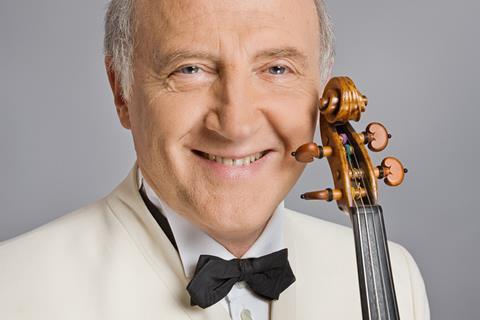Two top pedagogues give their us their best 60-minute practice tips

In our April 2021 cover story, violinist David Garrett explains that practising too much when he was younger resulted in injuries that limit the amount he can practise today. Whether your body can’t play for longer or you just dont have more time free, knowing how to maximise the effectiveness of a short practice session is key.
We’ve looked through our archives to bring you contrasting approaches from two top violin pedagogues.
Boris Kuschnir, Music and Arts University of the City of Vienna
Firstly, for a student who wants to become a professional violinist and practise only one hour a day, I would strongly suggest that they change profession. For a student who regularly practises many hours but occasionally has only an hour to spare, I recommend the following schedule:
1. 5–7 minutes
Play continuous open strings at a very slow tempo in piano and mezzo piano, aiming for 20 to 25 seconds per bow in both directions. You can also start in piano at the frog, make a crescendo up to forte at the tip, and then come back on the up bow making a diminuendo to piano at the frog.
2. 15–20 minutes
Practise different exercises from the first book of Schradieck. Play them on different strings and in various positions (even the very high ones), starting at a moderate tempo and increasing in speed.
3. 20 minutes
Practise scales, arpeggios and double-stops in 3rds, 6ths, octaves, 10ths and fingered octaves, in moderate and fast tempos.
4. 10 minutes
Play a fugue from one of Bach’s solo sonatas.
5. 10 minutes
Play Paganini’s Moto perpetuo in different tempos.
Read ‘There’s nothing more I can do than my two to three hours of practice a day’ – David Garrett
Read A 30-minute daily practice routine for violinists and violists
Read David Garrett: His own path
Bonnie Hampton, San Francisco Conservatory of Music
How much instruction a student is given about the use of practice time depends very much on their age. One hour implies someone quite young and therefore in need of direction. A balance is important. There is building time, which is usually spent with scales and etude-type material to develop new skills; and then time learning repertoire with a keen attention to both technical and interpretative issues. Some variety is also helpful for keeping critical sense and listening abilities sharp.
Given an hour of practice, scales and other technical work might take 15–20 minutes. One can do a lot of good work on scales in 7–10 minutes, but it must be regular.
In terms of music, working on at least two pieces of different styles can keep efforts from becoming stuck. One might give more time to a particular piece on some days, but it should never be automatic practice. A student deserves to be excited about the music and stimulated to meet the challenges involved. In all of this, it is the teacher’s job to point out not only the things that need to be accomplished and improved, but also how to accomplish them. Our job as teachers is to give the student the tools to teach themselves, although that takes many years.








































No comments yet